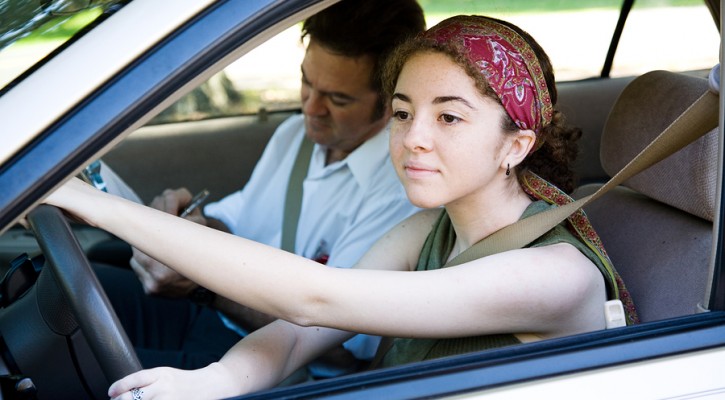Tag Archive: drug and alcohol course

Driver’s Ed is Not a One Shot Deal
September 1, 2010
Working in the driver safety field for over a decade, I find myself giving parents both solicited and unsolicited advice. I am passionate about teen driver safety, not only because I was a teenage driver at one time and made irrevocable mistakes along with many of my friends, but also because I am a parent who is concerned about my own teen drivers and their friends on the road.
Driver ed is not a one time deal. From the ages of 14 to 19, parents need to approach driver training as driver continuing education. Aspects of continuing education include: safety awareness, prevention education, introductory teaching, skill development, intermediate education, additional driving exposure and defensive driving education. The Governor’s Highway Safety Administration (GHSA) and many individual states are aware of the importance of continuing driver education. As parents, it is time that we change our attitudes and recognize the value this type of training provides.
By the time a soon-to-be driver is 14, they realize that it won’t be long before they are behind the wheel. They become more aware of how you, your family members and other adults they travel with drive on the roads. They notice when you speed, try to multi-task, weave in and out of traffic, try to beat the red light and fuss about other drivers.
From this point, driver training has begun. If you haven’t already started being a positive role model, the time has come to do so. This is a good time to:
- Brush up on the state’s driving manual
- Discuss the precautions you take when deciding what time to leave, routes to go and lanes to travel in and how those precautions change based on circumstances
- Discuss current driving related articles in the news and prevention strategies
Prior to applying for your learner’s permit, Florida law requires completion of the Drug and Alcohol Class, which is a 4 hour course that focuses on prevention. Two-thirds of the curriculum generally addresses the dangers of drugs and alcohol and how deadly they become when combined with driving. The remainder of the curriculum addresses:
- Following distances
- Stopping distances
- Special vehicles
- Different aspects of the driving environment
It can be done in a classroom setting with an instructor or online at their leisure.
At this point, your teen hasn’t even started the vehicle and quite a bit of education has already begun. This is a great time to create a Parent-Teen Driving Contract, which will establish the boundaries, responsibilities and privileges of driving during their teen years. Also keep a driving log; to keep track of the amount, type and time of day that driver training was conducted.
Once the new driver has passed the road signs, regulations and eye tests, they will be issued a Learners Permit from the Division of Motor Vehicles. As a parent, you can now begin some introductory teaching:
- Show them the equipment, gauges and their functions on the interior and exterior of the vehicle.
- Begin very simple skill development regarding pre-trip inspections, starting, stopping and parking.
The next step is to move into intermediate education and intermediate skills. You may want your teen to take a driver’s education class or practice with an instructor. If you plan to take on the instruction yourself, it should be during this stage that you dedicate time (most states require 50 hours supervised) exposing them to highways, specific weather conditions and driver safety practices such as how to properly use the vehicle mirrors.
Practicing these intermediate driving skills help the new driver develop an adequate understanding of the vehicle and the skills to maneuver it with confidence. This is the time to discuss what it means to be a safe driver. Some topics to consider:
- What type of driving behaviors do safe drivers demonstrate?
- What type of attitudes do other drivers bring behind the wheel?
- How should a safe driver respond to harried, angry, or inattentive drivers?
- How important is being rested to making safe driving decisions?
As you move into the next stage of driving, your teen driver should demonstrate control of the vehicle. You should feel confident in their judgment and how they handle most driving situations. Focus on refining their skills by exposing them to complicated driving scenarios and employing defensive driving strategies such as:
- How to handle multiple hazards
- Identifying hazards with the greatest priority
- Which escape routes are available
- Complex right of way situations
Walk through vehicle emergencies, not only handling their vehicle, but also how to respond to another vehicle experiencing an emergency such as a blown tire.
Enroll your teen in a defensive driving class either right before they get their license or soon afterwards. While they may know how to drive, they haven’t been ready to fully understand defensive driving techniques for themselves. Don’t wait until something happens that requires them to take a class.
Because teenage drivers are most at risk of a crash during their first year of licensure, there are supplemental classes they can take. Some courses are only one hour and include topics such as:
During that first year, it is important to phase in how much access to the vehicle they have, the time and under what conditions they drive, and the number of passengers, if any allowed.
Driving is such an important step in a teen’s development, but it can also be very dangerous. It is up to the parents to establish and enforce a strong graduated licensing system. Remember that driver education is ongoing over the teenage years.
Driver education is continuing education.

Why You Should Take a Drug and Alcohol Course: A Note about Marijuana and Driving
January 5, 2009
Of course, a Florida drug and alcohol course is mandatory; you’ll have to take it so you can get your driver’s permit. But a certificate isn’t the only thing you should take away from the class – the knowledge you gain could one day save your life.
Drinking alcohol and driving gets a lot of attention, both in driver’s education courses and in the media, and it should; many teens die in alcohol-related crashes each year. But some teens forget about or ignore the effects of illegal drugs on driving, particularly with drugs that are incorrectly perceived to be harmless, like marijuana. But marijuana, whether used alone or in combination with alcohol, is anything but harmless for any driver.
By far, marijuana remains the most widely used illegal drug among teens. The main active chemical in marijuana is THC (delta-9-tetrahydrocannabinol). Short-term effects of marijuana use include problems with memory and learning, distorted perception, difficulty in thinking and problem-solving, loss of coordination, and increased heart rate, anxiety, and panic attacks.
After alcohol, marijuana is the substance most frequently found in fatal automobile crashes. Even a moderate dose of marijuana can impair driving performance. Alcohol and marijuana are also often found together, resulting in a dramatic spike in impairment levels and decreased driving performance. The effects of a low dose of marijuana combined with alcohol are much greater than for either drug alone.
Combining any two drugs, or a drug with alcohol, may result in the synergistic effect. This means that the combination of drugs produces effects that are greater than the sum of the effects of the two drugs. This is called an additive effect; instead of a 1 + 1 = 2 result, the synergistic effect may cause a 1 + 1 = 3 result.
Remember, any drug that affects your safe driving can mean a DUI – or worse.
Getting your Florida learner’s permit requires certain steps. Here is a useful Learners Permit checklist to get you started.

How to Get a Florida Learner’s Permit
December 5, 2008
So, you’re fifteen years old and ready to get your Florida Learner’s Permit. Congratulations! You are about to take the first step towards increased freedom and independence – but along with that comes increased responsibility. You’ll need to follow certain steps to get your learner’s permit. Here’s how to make the process as smooth as possible.
First, try to plan ahead. Many new drivers want to get their regular driver’s licenses as soon as they turn 16, but you need to have held a learner’s license for at least one year without any traffic convictions before you apply for your operator’s license.
When you go to the DMV, you’ll need appropriate identification. You’ll also need a certificate of completion for the Traffic Law and Substance Abuse Education course. Your parent or legal guardian will need to sign a consent form. Then you’ll be ready to take the written test!
The written test consists of 20 questions about road rules and 20 questions about road signs. You must answer 15 out of 20 questions correctly to pass each test. Then you’ll take a vision test and a hearing test right there at the DMV.
Once you earn your learner’s permit, you must comply with certain restrictions to keep it. You can never drive alone with a learner’s permit, no matter how old you are. You may only drive during daylight hours during the first three months and until 10 p.m. thereafter, always with a licensed driver who is at least 21 years old and occupies the front passenger seat.
You’ll need to follow all traffic laws carefully, both to develop safe driving habits and to avoid further restrictions. If you receive a moving traffic conviction while you have a learner’s license, the one-year period you are required to hold your learner’s license will be extended for one year from the date of the conviction or until you are 18 years old, whichever happens first.
If you receive six points on your driving record within a 12-month period, your driving privileges are automatically restricted to business purposes only for 12 months or until you are 18, whichever happens first. If you receive additional points during this restricted period, the restriction is extended 90 days for each additional point.
In addition, drivers under the age of 21 with a blood alcohol level of .02% or more will have their license immediately suspended for six months. This administrative action is for a first offense; a second offense will result in a one-year suspension. Refusal to submit to testing results in a suspension of twelve months for a first offense and eighteen months for a second offense.
If you are truant in your school attendance, your driving privilege will be suspended until you provide proof you have attended school for 30 consecutive days.
As you can see, once you get your learner’s permit, you’ll need to drive very safely to keep it and to earn your operator’s license. Taking this responsibility seriously will go a long way towards earning your place in society as a trustworthy adult.
